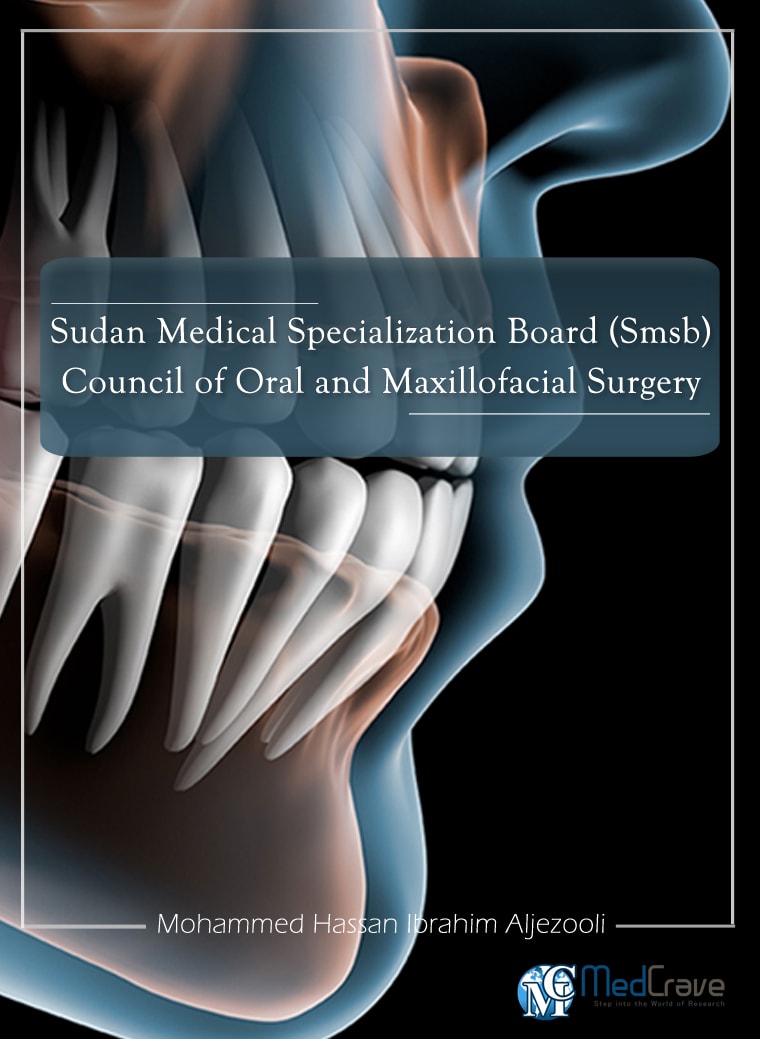eBooks View all | By AtoZ | By category
Sudan Medical Specialization Board (Smsb) Council of Oral and Maxillofacial Surgery
By Mohammed Hassan Ibrahim Aljezooli
International University of Africa, Sudan
Published: Sep 20, 2016 | pg. no: 1-27
Abstract: Background: Oral and maxillofacial surgery (OMFS) is a relatively recent specialty in Sudan. Despite its great contribution in health services? difficulties are experienced due to the lack of knowledge of the healthcare professionals and medical students as well as the public concerning the scope of OMFS. Objective General objectives: a. To assess the awareness of the healthcare professional? medical students and dental students about the scope of OMFS. b. To bridge the gap of knowledge between the medical profession and the specialty of OMF. Specific objective: 1. To increase the knowledge of the medical professionals by establishing OMFS departments in general hospitals. 2. To address medical schools to include a module of OMFS in the undergraduate curriculum. 3. To include lectures and shifts to attend referred clinics and operating sessions at OMFS units for postgraduates. 4. To include OMFS as an elective rotation in the internship period. Materials and methods: The study was conducted at Khartoum State. A single paper of a questionnaire in English was given to fifty medical specialist, fifty medical residents in different specialties (internal medicine? general surgery, neurosurgery?ENT surgery ?plastic surgery? pediatrics? orthopedics? emergency medicine and obstetrics and gynecology,? fifty medical general practitioners (MGP), fifty medical house officers, fifty medical students(final year)and fifty dental students (final year) giving the total number of three hundred responses. Twelve pathological conditions were chosen as follows: 1-simple and complicated tooth extraction 2-facial trauma3- cysts of the oral and Para oral and head and neck region 4-correction of facial deformity 5-clefT lip and palate 6-oral cancer and head and neck malignancies 7-facialreconstruction 8- facial infections 9-dental implants 10- maxillary sinus tumors 11-tempromandibular joint disorders 12- salivary glands disorders. They were asked to choose the most appropriate specialty to treat the problem. Referral patterns were either to a plastic surgeon? ENT? OMF surgeon? General Surgeon? or other specialty. Results: The data showed that there was general consensus among healthcare professionals and medical students about the role of OMFS in teeth extraction? dental implants and tempro-mandibular joint disorders. But for the role of OMFS in the treatment of facial trauma? facial infections? cysts of the oral and para oral region? cleft lip and palate? oral cancer and malignancies of the head and neck? facial defects reconstruction? maxillary sinus tumors and salivary glands disorders only 30.8% (the mean) of medical specialists?47.1%(the mean) of medical residents?55.3%(the mean) of medical general practitioners ?36% (the mean)of medical house officers and 34.4% (the mean)of medical students selected OMFS to treat these problems. Dental students showed high awareness of the scope of OMFS as 83.2% (the mean) of them selected OMF surgeons to treat the selected disorders. Conclusion: While the dental students realize the scope of the specialty to a great extent? medical professionals and medical students are not fully aware of services which is supposed to be offered by the specialty to the patients. In order to ensure the proper referral of all patients? the specialty needs to be known by medical professionals and medical students.
View eBook
